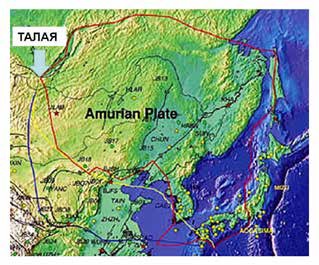The seismicity studies are conducted at the Talaya seismic station located 7 kilometers west of Lake Baikal and a few kilometers south of the Main Sayan Fault separating the stable Siberian Platform from the seismically active Baikal Rift Zone.
The scientists participating in the project represent the Laboratory of Physical Problems of Geophysics of the Trofimuk Institute of Petroleum Geology and Geophysics SB RAS (Novosibirsk), the Institute of Automation and Electrometry SB RAS (Novosibirsk), Federal Research Center "Unified Geophysical Service of the Russian Academy of Sciences" (FIC EGS RAS) and the Ilyichev Pacific Oceanological Institute (POI) FEB RAS (Vladivostok).
The research objectives described by the scientists include: the study of current crustal deformations in the southwestern Baikal Rift system (based on long–term geodetic observations and absolute gravity measurements); registration of earthquakes and their aftereffects; comparison of the results achieved (e.g. seismic velocity values) with the existing concepts.
Why was the area chosen to conduct the field works?
According to scientists, the Baikal region is noted for a high seismic activity, which is confirmed both by the known historical and instrumentally recorded earthquakes (from 1950 to 2022), of which some had magnitude more than 7. Within the 100-km zone in the vicinity of the Talaya seismic station, several large (M>6) earthquakes were recorded between 1992 and 2022. Thus, the M = 6.3 Kultuk earthquake, which occurred on August 27, 2008, 25 km away from the Talya seismic station, produced a strong vibration causing destruction of masonry chimneys in the buildings of the seismic station.
Recent movements – both in the Baikal Rift (in the west) and continental margin in Primorye (in the east) – are associated with the existence of the Amur Plate. As it shifts eastwards, the stresses accumulated in the crust are concentrated in gradient zones at the boundaries. Given that the plate margins are characterized by high seismicity, geodetic and gravimetric measurements of present-day ground motions remain highly appropriate here.

Location of the Talaya seismic station and variants of the Amur tectonic plate boundaries
Scientists are actively monitoring the situation on the western boundary of the plate: as part of this work, they have analyzed results of the long-term observations of recent movements based on different geophysical methods at the Talaya seismic station.
Crustal deformation measurements progressively advanced from the ones started in the earth shaft of the seismic station (1985) to high–precision measurements of the absolute value of gravity (1992), and to space geodesy method (2000).
What are major conclusions the scientists arrived to ?
Experts examined the rates of horizontal displacements registered at the survey points in the Baikal Rift seismically active zone with respect to the stable Siberian Platform. Analysis of the results obtained in the period 2000-2022 showed that the displacement rate variations for the Talaya point relative to the Irkutsk point were from 0.4 mm/year to 1.1 mm/year (for southward displacements) and from 1.5 mm/year to 2.4 mm/year (for eastward displacements).
On average, for the period 2000-2022, surface displacement to the southeast-east relative to the Siberian Platform was estimated to be 1.9 mm/year.
In consideration of the problem of earthquake precursors, we can ascertain that relative displacement velocity in the zone of the Main Sayan Fault declined in the era of the 1999 South Baikal earthquake (M = 6.1), while vertical ground motion came to a full stop in the era preceding the 2008 Kultuk earthquake (M = 6.3).
In the future, the research activities at the Talaya station are planned to be continued.
The work was conducted within the IPGG SB RAS research project number FWZ-2022-0019 and the research projects of POI FEB RAS, IAE SB RAS and FIC EGS RAS. The research results were included in the Proceedings of the 13th Symposium Physics of Geospheres (September 11-15, 2023, Vladivostok, Russia).
Published by the IPGG Press Service
Photo courtesy of V.Yu. Timofeev